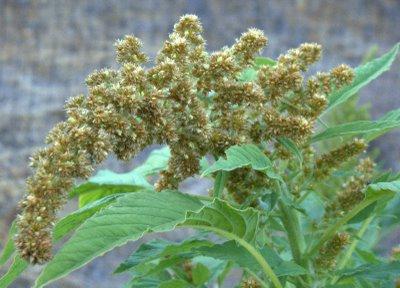Currently, many countries around the world are producing amaranth for grain, as animal feed, as a salad or decorative culture. The cultivation of this plant has become popular in our country, and in some areas it has become widespread.
The history of amaranth as a food product dates back thousands of years. For centuries, it has been the staple food of the New World Indians. The nutritional value of amaranth was at the level of beans and corn. But since these cultures were brought into the Old World, their cultivation continued there. Amaranth was banned for use due to the fact that it was a ritual culture among the Aztecs.
In our country, the first to try to revive interest in this plant was Academician N. Vavilov, after visiting Mexico in 1930. But only after 60 years, his dreams were destined to come true. Now in our country, amaranth is cultivated on an area of about 50 thousand hectares.
Growing seeds from this crop worldwide is a merit of American scientists from the Rodeil Center , PA. They created a truly unique fund of planting material. The Center is breeding and breeding, developing recommendations on cultivation technology.
The specialists of this center give recommendations to novice farmers who are going to grow amaranth. Growing from seeds of this culture should not occupy large areas. This area of business is not very profitable. First you need to select high-quality amaranth seeds, learn how to sow them, properly grow, harvest, transport, dry, and only after that you can begin to expand the sowing area.
At the first stage, it is necessary to find a market for amaranth seeds, to conclude contracts. The field of activity of this sphere in Russia is not too vast; for us, this plant remains an exotic culture. A small number of domestic companies are engaged in the processing of seeds into oil, flour, they produce cereal, caramel, they are used in baking, cosmetology. The same is true in the USA. Only a little more than 500 farmers cultivate amaranth, growing from seeds to grain is carried out on areas of about 4 thousand acres.

Despite the fact that the popularity of this culture is not up to standard, it is quite profitable in the economic sense. Economists have calculated that for those farmers who cultivate amaranth, growing from seeds requires little money, and selling seeds at a cost of 40 cents per pound, flour is sold at a price of $ 10 / kg, and oil from seeds - $ 200 / kg. Net income per acre on which grain is produced reaches 350 dollars. For comparison: corn gives only $ 200 profit. But for such indicators, you need to find a buyer.
Such small volumes of amaranth cultivation all over the world are explained by the fact that there are a large number of traditional food products in each country. But the scientists of the world are confident that in the future this culture will become in demand due to its advantages.
Amaranth is a highly nutritious culture, its protein contains a large amount of lysine, which can fully satisfy the need of mankind for it. This plant is quite drought tolerant, has little need for watering. Amaranth cultivation is an economically and environmentally beneficial measure.